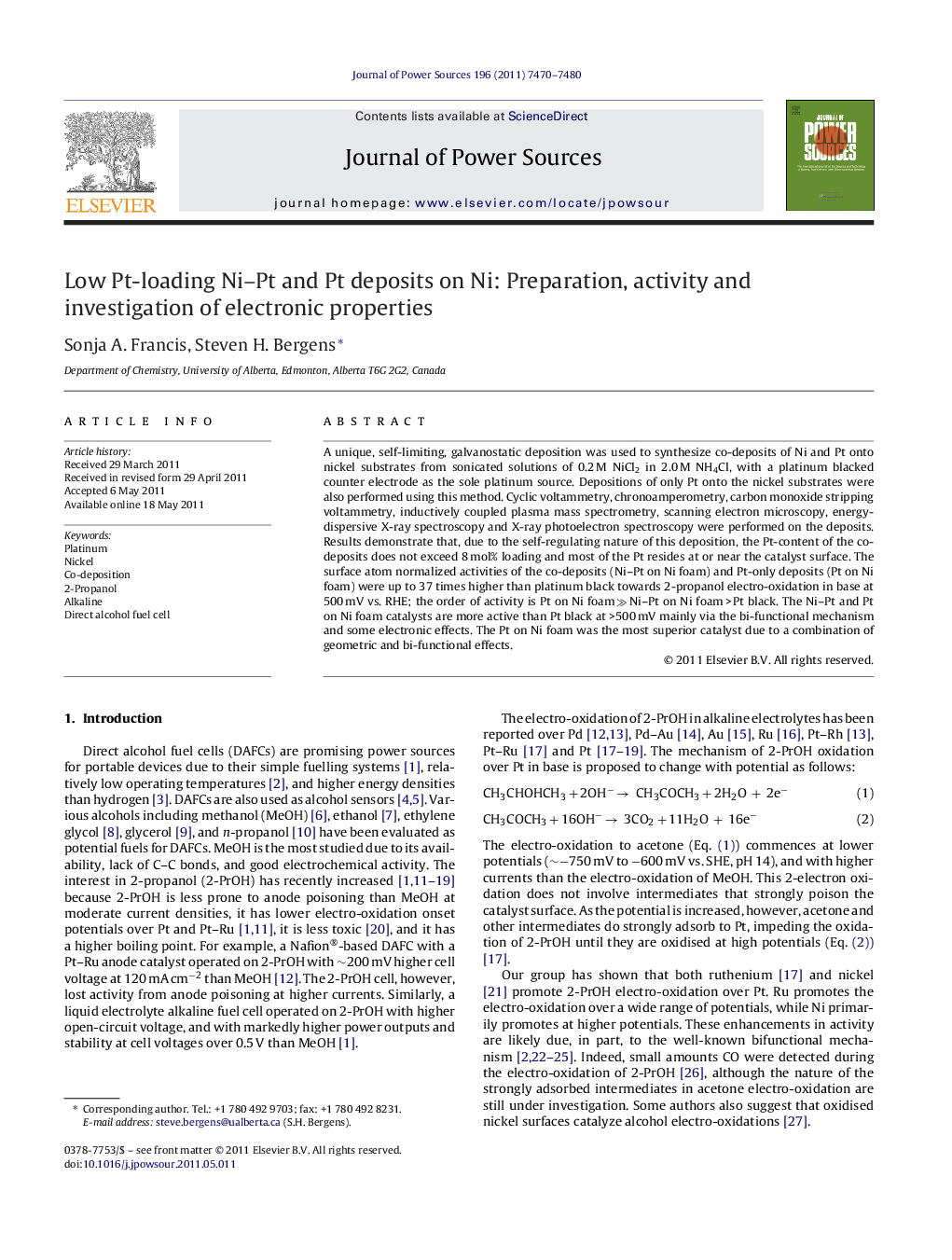| Article ID | Journal | Published Year | Pages | File Type |
|---|---|---|---|---|
| 1293361 | Journal of Power Sources | 2011 | 11 Pages |
A unique, self-limiting, galvanostatic deposition was used to synthesize co-deposits of Ni and Pt onto nickel substrates from sonicated solutions of 0.2 M NiCl2 in 2.0 M NH4Cl, with a platinum blacked counter electrode as the sole platinum source. Depositions of only Pt onto the nickel substrates were also performed using this method. Cyclic voltammetry, chronoamperometry, carbon monoxide stripping voltammetry, inductively coupled plasma mass spectrometry, scanning electron microscopy, energy-dispersive X-ray spectroscopy and X-ray photoelectron spectroscopy were performed on the deposits. Results demonstrate that, due to the self-regulating nature of this deposition, the Pt-content of the co-deposits does not exceed 8 mol% loading and most of the Pt resides at or near the catalyst surface. The surface atom normalized activities of the co-deposits (Ni–Pt on Ni foam) and Pt-only deposits (Pt on Ni foam) were up to 37 times higher than platinum black towards 2-propanol electro-oxidation in base at 500 mV vs. RHE; the order of activity is Pt on Ni foam ≫ Ni–Pt on Ni foam > Pt black. The Ni–Pt and Pt on Ni foam catalysts are more active than Pt black at >500 mV mainly via the bi-functional mechanism and some electronic effects. The Pt on Ni foam was the most superior catalyst due to a combination of geometric and bi-functional effects.
► Ni–Pt co-deposits and Pt deposits as catalysts for electro-oxidation of 2-propanol. ► Ni promotes activity of Pt at moderate to high potentials. ► Electronic, bi-functional and geometric effects influence activity at these potentials.
